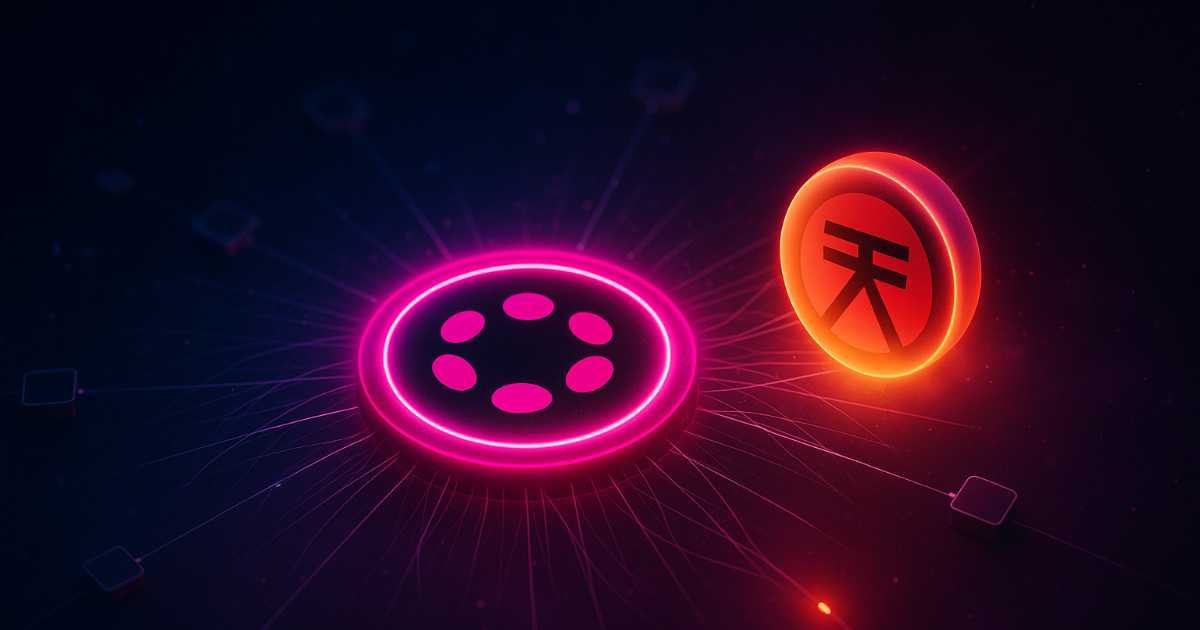Home · Blog · Blockchain Technology · · Updated Oct 30, 2025 · 4 min read
What Are Polkadot Parachains? Scalability, Shared Security, and XCM
Polkadot parachains scale through parallel specialized chains with shared security, XCM interoperability, forkless upgrades, and slot leases.

TL;DR
Parachains are application-specific blockchains that plug into Polkadot’s Relay Chain for shared security, parallel execution, and native interoperability (XCM). They upgrade without forks, pay predictable fees, and onboard via time-boxed slot leases won in auctions (often supported by crowdloans).
Key Takeaways
- Shared security: Parachains inherit validator security from the Relay Chain.
- Parallel scalability: Many specialized chains execute blocks concurrently.
- Native interoperability: Assets and messages move via XCM without external bridges.
- Forkless upgrades: On-chain governance enables seamless runtime updates.
- Auction-based onboarding: Slots are leased for fixed terms; parathreads offer pay-as-you-go.
Why Parachains Exist
Most monolithic blockchains process transactions sequentially, which limits scalability. Polkadot solves this by splitting workloads across many specialized lanes called parachains. Each parachain runs its own runtime logic while the Relay Chain handles consensus, validator security, and communication between chains.
- Specialized: Purpose-built runtimes for DeFi, identity, gaming, or data services.
- Parallel: Each parachain executes blocks concurrently with others.
- Interoperable: Assets and messages move through Polkadot’s XCM protocol.
- Upgradable: Forkless upgrades via on-chain governance keep networks evolving without disruption.
How Scalability Works
- Shared Security (Relay Chain): Validators on the Relay Chain verify parachain blocks, so projects don’t need to run their own security model.
- Parallel Execution: Dozens of parachains produce blocks simultaneously, increasing total throughput across the network.
- Cross-Chain Messaging (XCM): Parachains exchange assets and data natively—no need for wrapped tokens or external bridges.
Learn more in the Polkadot architecture overview and the XCM documentation.
Predictable Fees and Performance
Polkadot replaces unpredictable gas markets with transparent, capacity-based fees. Parachains define their own fee logic, while the Relay Chain manages block inclusion fairly.
This structure lowers costs for users and gives developers predictable performance.
- Efficient: Compute-heavy logic stays inside parachain runtimes.
- Stable: Fees remain consistent, less impacted by congestion on other chains.
- Collaborative: Interoperability keeps liquidity and activity circulating within the ecosystem.
Forkless Upgrades
Parachains can deploy runtime upgrades seamlessly through governance without forks or downtime. This agility allows continuous innovation while maintaining chain integrity and user balances. It also prevents fragmentation—every node upgrades together automatically.
Types of Parachains
- System Parachains: Built-in chains that handle governance, staking, and infrastructure tasks.
- Application Parachains: Custom chains for DeFi, NFTs, gaming, or cross-chain trading.
- Hub Parachains: Specialized connectors that route liquidity and data between multiple networks.
Slot Lifecycle: Auctions, Leases, and Renewals
To join the network, a project must win a parachain slot through an auction using DOT tokens.
- Slot auctions: Teams bid DOT to secure a lease for 6–24 months.
- Crowdloans: Supporters temporarily lock DOT to help projects win slots and often receive project tokens in return.
- Lease expiry: When a lease ends, teams can bid again, migrate, or continue as a parathread (pay-as-you-go).
- Redemptions: DOT holders recover their locked tokens after the lease or if their project loses the auction.
Learn more about slot auctions and parathreads.
Parachains vs Modular L2s
| Aspect | Polkadot Parachains | Modular L2s (e.g., rollups) |
|---|---|---|
| Security | Shared on Relay Chain | Inherit/bridge from L1; fraud/validity proofs |
| Execution | Parallel across many chains | Batch/rollup execution off-chain |
| Interop | Native XCM | Bridges/interop frameworks |
| Upgrades | Forkless via governance | Often contract/migration based |
| Fees | Transparent, capacity-based | L1 gas dependency, sequencer fees |
| Onboarding | Slot auctions & leases | Deploy contracts/rollups; no auctions |
Benefits of Parachains
- Shared security: No need to bootstrap independent validator sets.
- Parallel scalability: Throughput increases without sacrificing decentralization.
- Native interoperability: Chains connect via XCM instead of external bridges.
- Customization: Purpose-built runtimes and tokenomics for specific use cases.
- Governance: Each parachain can run its own DAO or decision system.
- Operational efficiency: Forkless upgrades, predictable fees, and cross-chain liquidity.
The SORA Connection
Projects like SORA used Polkadot’s parachain model to experiment with cross-chain DeFi, liquidity aggregation, and governance before evolving toward its own sovereign Iroha-based hub chain.
SORA’s early parachain phase demonstrated how specialized networks can thrive within Polkadot and later transition to sovereignty.
For more on its governance evolution, read Polkadot to Iroha: How SORA’s Governance Is Evolving.
For broader economic context, see Bitcoin vs XOR: Competing Visions for a New World Economic Order.
Conclusion
Polkadot parachains mark a major step toward scalable, connected blockchains.
By letting specialized chains run in parallel under shared security and unified governance, Polkadot redefines what blockchain scalability looks like—an ecosystem where innovation and interoperability move together at network speed.
FAQs
What are parachains in Polkadot?
They’re independent blockchains connected to the Polkadot Relay Chain, gaining shared security and interoperability while keeping their own rules and tokens.
How do projects get a parachain slot?
Through auctions. Teams bid DOT tokens, often supported by crowdloans, to lease a slot for a fixed period.
What happens when the lease ends?
Projects can renew by bidding again, migrate to another network, or switch to a pay-as-you-go parathread model.
How are parachains different from regular blockchains?
They’re optimized for parallel execution and native cross-chain communication instead of isolated operation.
What is SORA’s relation to parachains?
SORA previously operated as a Polkadot parachain before transitioning to an independent hub chain based on Hyperledger Iroha, continuing its mission of building an interoperable decentralized economy.
Additional Resources
Related Articles
Financial Disclaimer
- polkadot
- parachains
- xcm
- +9 more
